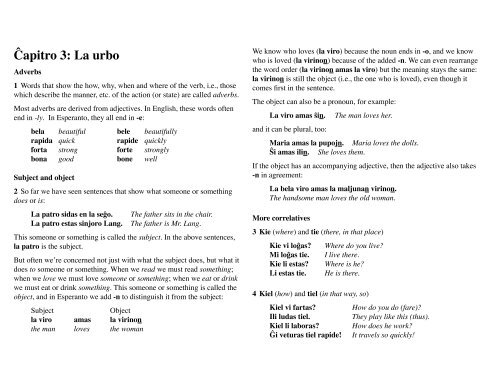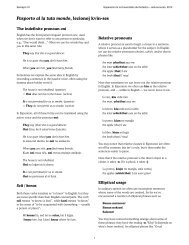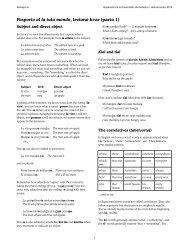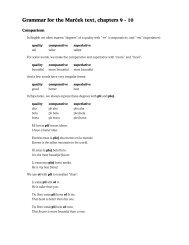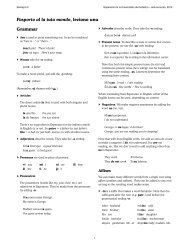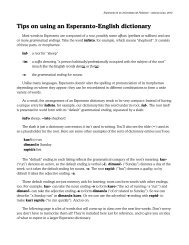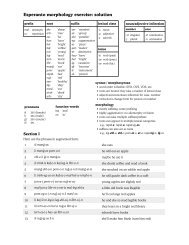The alphabet and pronunciation - Lodestone
The alphabet and pronunciation - Lodestone
The alphabet and pronunciation - Lodestone
- No tags were found...
You also want an ePaper? Increase the reach of your titles
YUMPU automatically turns print PDFs into web optimized ePapers that Google loves.
!apitro 3: La urboAdverbs1! Words that show the how, why, when <strong>and</strong> where of the verb, i.e., thosewhich describe the manner, etc. of the action (or state) are called adverbs.Most adverbs are derived from adjectives. In English, these words oftenend in -ly. In Esperanto, they all end in -e:! bela! beautiful! bele! beautifully! rapida! quick! rapide! quickly! forta! strong! forte! strongly! bona" good! bone" wellSubject <strong>and</strong> object2! So far we have seen sentences that show what someone or somethingdoes or is:! La patro sidas en la se#o.! <strong>The</strong> father sits in the chair.! La patro estas sinjoro Lang.! <strong>The</strong> father is Mr. Lang.This someone or something is called the subject. In the above sentences,la patro is the subject.But often we’re concerned not just with what the subject does, but what itdoes to someone or something. When we read we must read something;when we love we must love someone or something; when we eat or drinkwe must eat or drink something. This someone or something is called theobject, <strong>and</strong> in Esperanto we add -n to distinguish it from the subject:! Subject! ! Object! la viro" amas" la virinon! the man! loves! the womanWe know who loves (la viro) because the noun ends in -o, <strong>and</strong> we knowwho is loved (la virinon) because of the added -n. We can even rearrangethe word order (la virinon amas la viro) but the meaning stays the same:la virinon is still the object (i.e., the one who is loved), even though itcomes first in the sentence.<strong>The</strong> object can also be a pronoun, for example:! La viro amas $in.! <strong>The</strong> man loves her.<strong>and</strong> it can be plural, too:! Maria amas la pupojn.! Maria loves the dolls.! %i amas ilin.! She loves them.If the object has an accompanying adjective, then the adjective also takes-n in agreement:! La bela viro amas la maljunan virinon." <strong>The</strong> h<strong>and</strong>some man loves the old woman.More correlatives3! Kie (where) <strong>and</strong> tie (there, in that place)! Kie vi lo#as?! Where do you live?! Mi lo#as tie.! I live there.! Kie li estas?! Where is he?! Li estas tie.! He is there.4! Kiel (how) <strong>and</strong> tiel (in that way, so)! Kiel vi fartas?! How do you do (fare)?! Ili ludas tiel.! <strong>The</strong>y play like this (thus).! Kiel li laboras?! How does he work?! &i veturas tiel rapide!! It travels so quickly!


